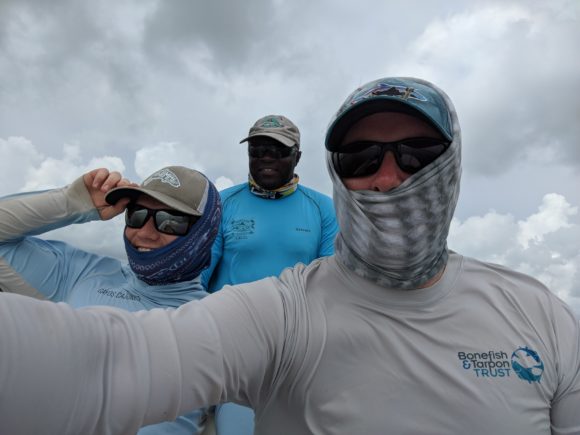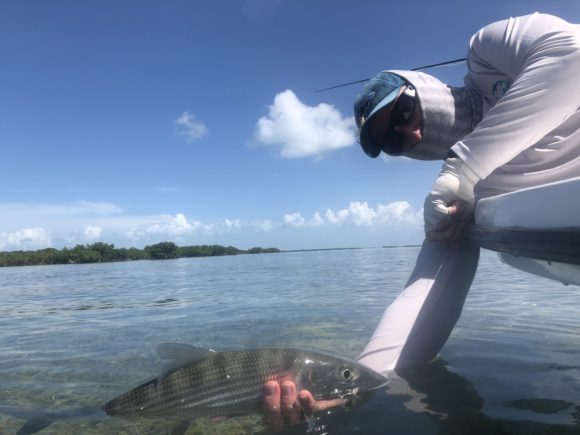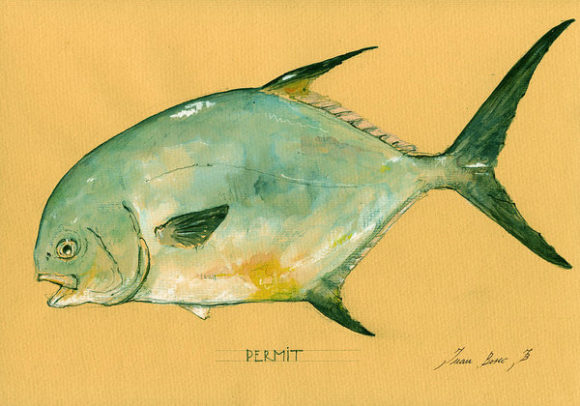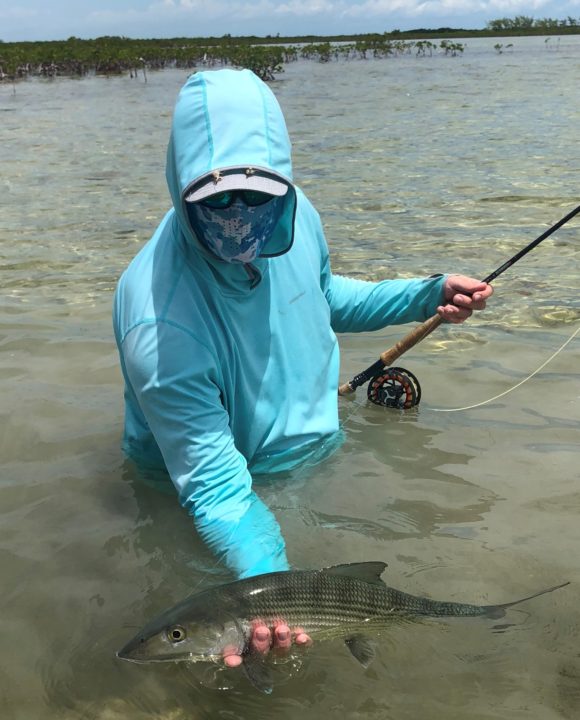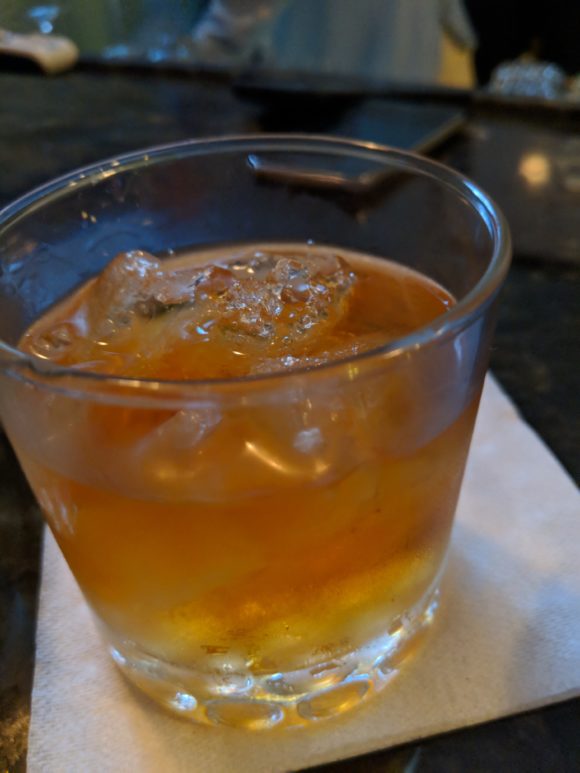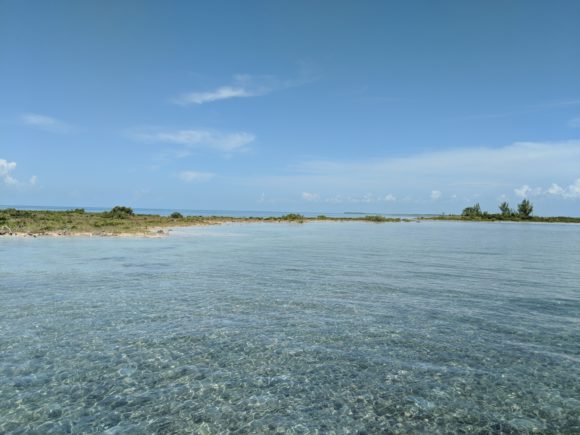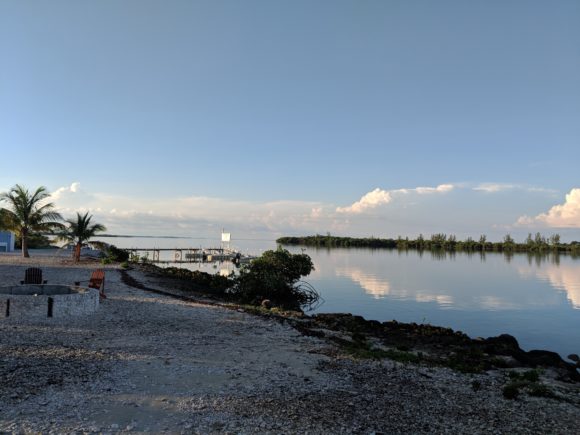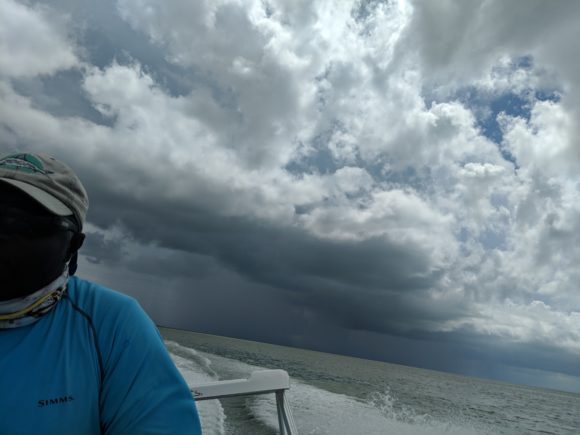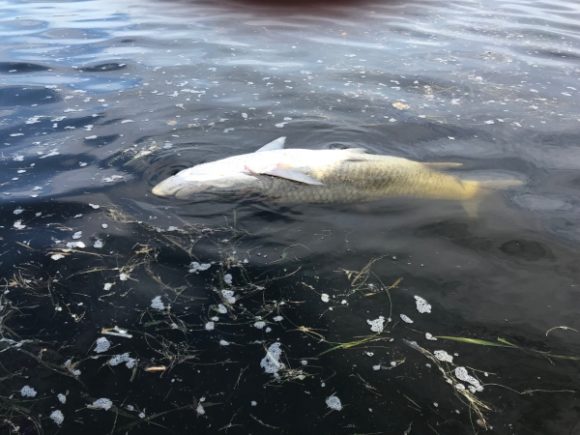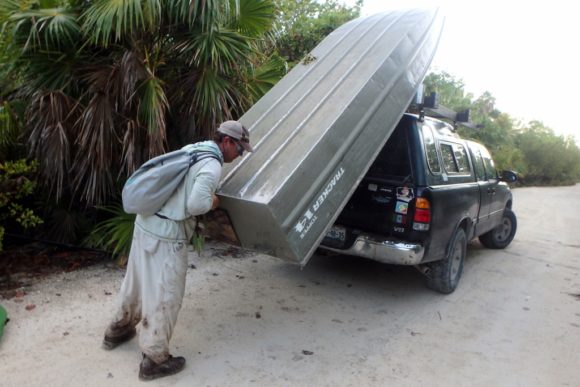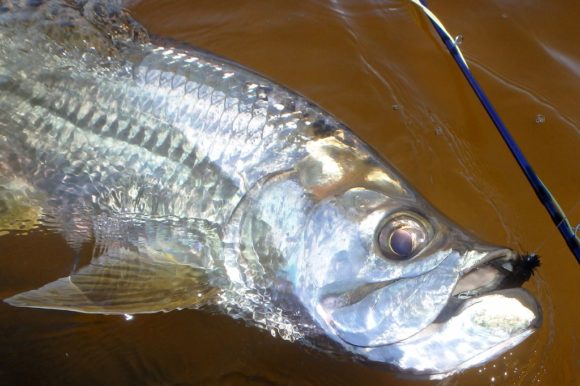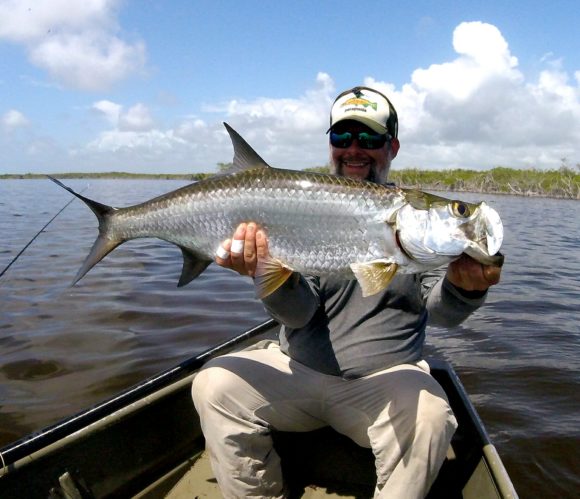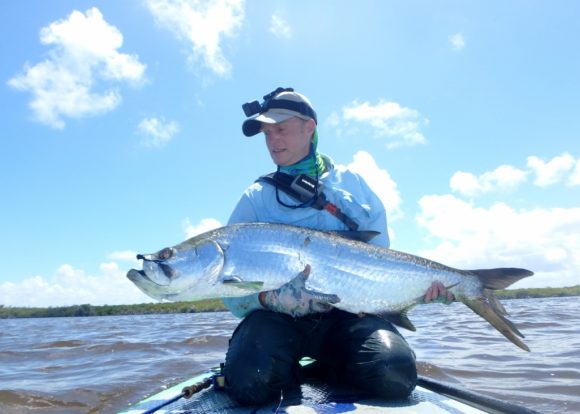Soon I’ll be back in Grand Bahama fishing for a week at East End Lodge. This little slice of the Bahamas is the home of the memories created by catching my first bonefish. I’ve been a few times and have found wonders there. Here’s the story of my first bonefish, caught within 5 minutes of East End Lodge back before EEL existed, in 2008.
__
I had seen bonefish in Hawaii and they were unimpressed. The fish themselves were incredible specimens, to this day, probably the largest I have ever seen. I lacked the skills or knowledge to do anything more that gawk at them, but that was the spark.

This was the bonefish I caught in Hawaii.
Knowing next to nothing about saltwater fly fishing, I asked about the Keys and was told if I actually wanted to catch a bonefish I should look further East to the Bahamas. The Bahamas, I was told, was where a saltwater noob, like myself, could make it happen. A plan was hatched and I roped my dad into the trip, threatening future visits with his granddaughter if he didn’t come along.
We certainly looked the part, there in the Miami airport, kitted out in the flats anglers uniform… the quick dry pants, the long-sleeved muted color flats shirt, maybe from Columbia, maybe Patagonia, maybe from the Ted Fey Fly Shop in my home town along the Upper Sacramento River. You can spot a fisherman in the airport as much by the uniform as by the rod tubes. We know the members of our tribe.
Our guide picked us up early the next morning from a dilapidated, but cheap, motel in Freeport. He did not wear the uniform and did not look the part. His long white tee-shirt, his baggy jeans, the gold chain, the un-laced sneakers… he was not what we were expecting, but was recommended by a Florida guide I knew by reputation, so we were rolling with it.
I have vivid recollections of the van ride out to the East End and the driver and our guide carrying on an indecipherable conversation (I picked up every 10th word) intermingled with conversation directed our way, of which I understood everything. Bahamians have the ability to open the door to you, and to close that very same door, simply by choosing the version of English they employ.
The drive from Freeport to McCleans Town passes through hamlet sized settlements arranged sporadically along the only East-West road on the long, thin island. It takes about an hour to reach that eastern end and this drive was my first real glimpse of the Bahamas. The thin pines stood out as I couldn’t understand, in this land of hurricanes, how these spindly pine trees could possibly beat out all comers and climb their way up the evolutionary ladder.
I also remember seeing the half-built and sometimes half-destroyed homes along the road. I later learned that good years, when the sea proves especially bountiful, a family might lay a foundation or pour some concrete and then the family might need to await another good year to build the next wall or put the roof on. Rocket mortgage isn’t an option for a Bahamian lobsterman. Some of these homes were also the victims to hurricanes or too many down years.
McLeans Town is the largest settlement on the East End, which means maybe a hundred or two inhabitants. The dock was lively as we pulled in. A small boat arrived carrying passengers from Abaco which lay somewhere beyond the horizon. Other small boats were getting in or heading out. Our skiff was waiting and we were quickly away, my dad, me and our guide.
Since this first trip in a skiff I’ve had dozens more. Some rides are long, maybe an hour, and some are choppy, slamming down in the troughs as you try not to injure a back or a testicle. Few trips have been as short. That first run in a skiff was maybe 5 minutes.
The water we found ourselves on was like a spring creek flowing through mangroves. I didn’t have a notion of tidal flows and didn’t expect to be in a drift boat in the Bahamas, quietly gliding over sand and mud and grasses and weeds. It was peaceful and sunny and not too windy, perfect conditions.
I was in the bow for maybe 2 minutes when the guide called out the school of fish.
“Bonefish, 10 o’clock, 60 feet. Do you see them?”
Dumbfounded looking out at shifting currents and the light dancing on the shallow bottom, weeds rippling in the soft current… I saw no bonefish.
“No…”
“Bonefish, 11 o’clock, 50 feet. Do you see them?”
Still, my eyes straining, feeling a bit dumb, knowing there were maybe a dozen bonefish within casting distance and I had no real notion of where they are outside of these pronouncements from the guide standing fifteen feet behind me, three feet above.
“No, I don’t see them.”
Here, he must have spun the boat, because I don’t recall this as a 12:00 shot, although, this was a decade ago now and the details may have slipped some.
“Bonefish! 11 o’clock, 40 feet. DO YOU SEE THEM?!”
Panic rising in the back of my throat now, I still don’t see them.
“No, I don’t!”
“Ray Charles could see those fish mon!”
Then they were there, in front of me. I saw them all at once, a school, almost too many to see an individual fish, 11 o’clock, 40, maybe 35 feet.
I made the cast. The guide told me to strip, strip, strip. I did as instructed.
The fish ate and I don’t recall now, but I’m sure there was a little trout set in there. I don’t see how there couldn’t be, but I don’t remember the set. What I do remember, and what strikes most people on their first bonefish, was the raw power of the run. Only large steelhead had ever made my reel howl like that and nothing had shown me my backing as quickly. It felt like the biggest fish I’d ever had on, ever.
It was maybe a pound.

First bonefish ever caught, horrible handling, I know.
That was it. I was hooked. I loved the visual aspect. I loved seeing the fish as opposed to casting at the place you think the fish will be. I loved the wind in the mangroves and the clear water and being barefoot on the deck of a skiff and the power of the fish.
More fish were caught that day. The guide proved to be excellent at his craft and truly horrible at making polite conversation. He served us one of the best meals I have ever eaten anywhere (another story completely). It was memorable in so many ways.

There were more.
That trip and that first fish were an inflection point. Prior to that I thought mostly of large trout and steelhead. I thought of freestones and tailwaters and spring creeks. I knew and loved rivers. From that point on I have been pre-occupied by bonefish and saltwater flats, learning to cast in the wind and how to tie gotchas in endless variations.
Since that day, I’ve had bonefish on the brain.

